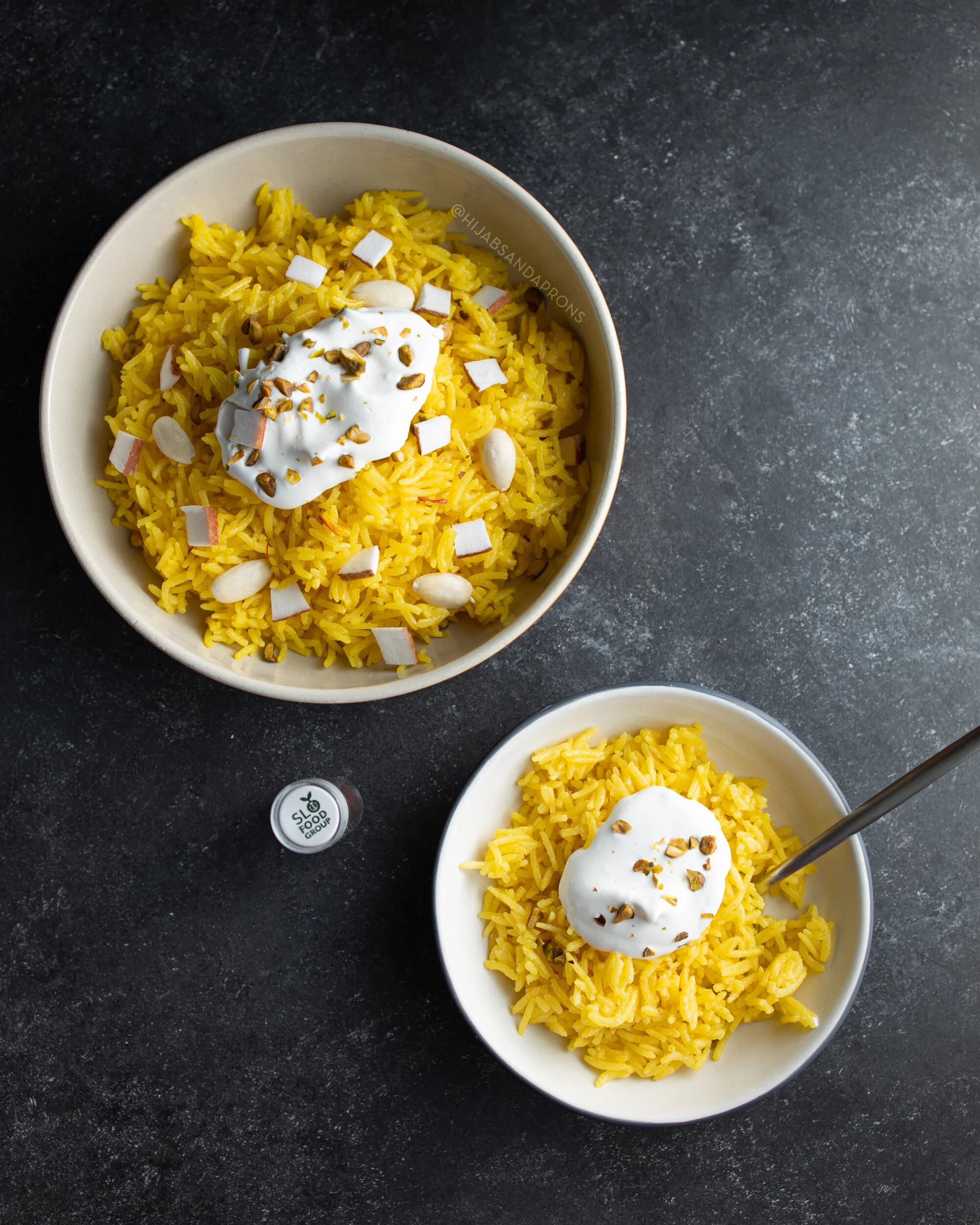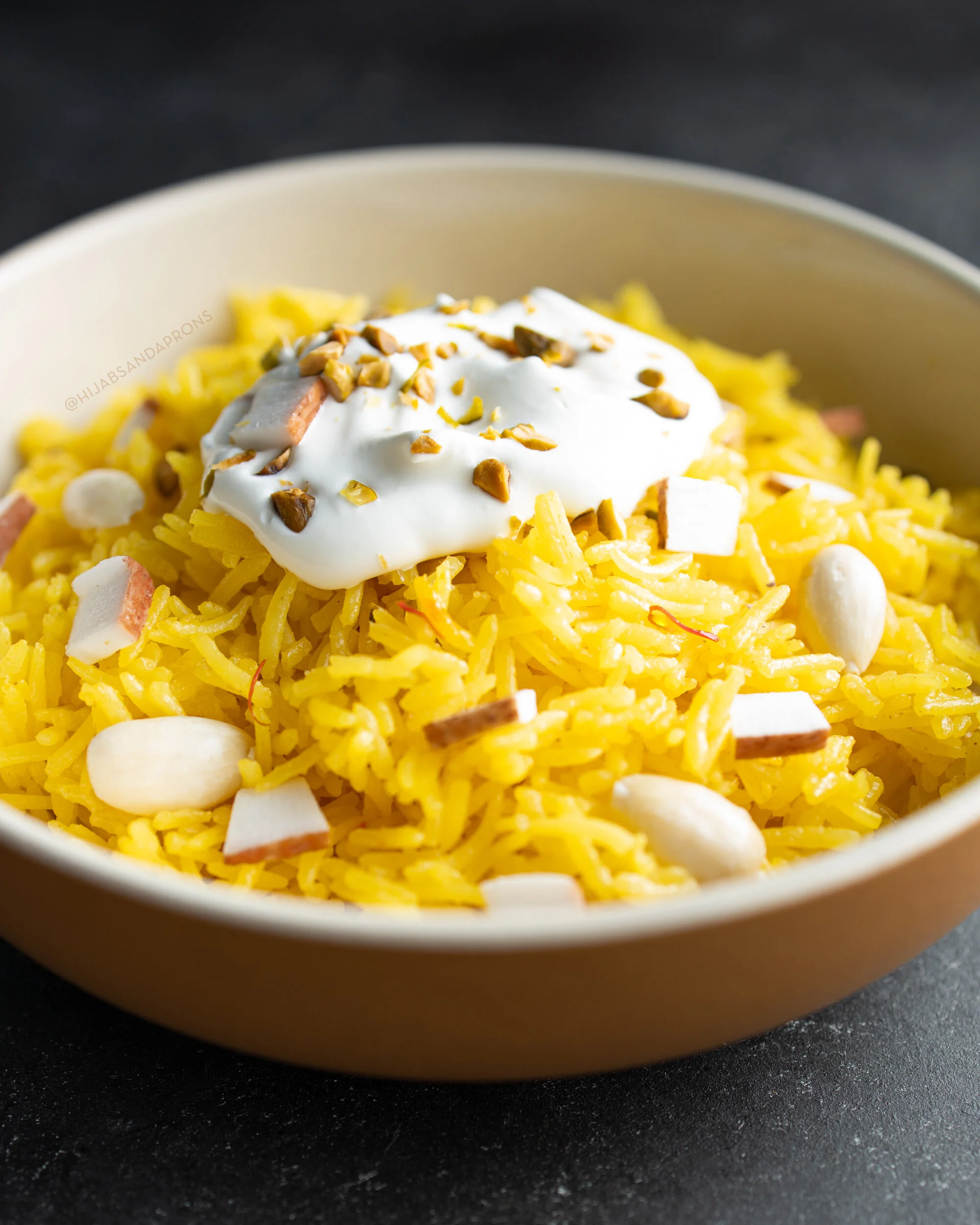Zarda (Sweet Saffron Rice) with No Dye or Coloring
Wow, my first post on this blog was Ramadan last year. And now,
Eid is just around the corner!
This is my second Pakistani/Desi dessert recipe in celebration of Eid. I grew up eating “sweet yellow rice” thinking it was healthy because it wasn’t ice cream or cake. I’m not so sure about that now, but I do know that I like to make my zarda less sweet than most other people. Feel free to add more or less sugar if you’d like. You can even substitute with splenda or stevia (I don’t know the conversions, though). No keto substitutes, though!
I’m against using artificial coloring in foods, so I rely exclusively on the power of saffron. I’ve been asked where to get good quality saffron “with good color” and honestly I’ve never had an issue with my saffron because I get mine from SLO Food Group. They ethically source their spices from small farms and communities.in Afghanistan, and I’m all for it!
I hope you’ll try this out and, for those of you who are South Asian, it may be a taste of home or remind you of your childhood.
Ingredients
4 tbsp butter
5-7 pods of cardamom, crushed
a chunk of cinnamon (2g)
1 cup basmati rice, soaked overnight
pinch of salt
1 cup whole milk + 2 tbsp
3/4 cup sugar
~1/4 tsp high quality saffron threads, packed (hard to measure, but try!)
Recipe
Heat the 2 tbsp of milk in the microwave until it’s steaming. Grind the saffron in a mortar with a pestle, then pour the hot milk into the saffron bowl (mortar). Let the saffron steep in the milk for about 10 minutes before moving on to the next step.
Par boil your rice with a pinch or two of salt. This should take about 5 minutes or so. Strain them when they’re half cooked.
Meanwhile, in a saucepan large enough to fit the rice, melt the butter over medium-low heat. Then add the crushed cardamom pods and cinnamon; swirl the pot around occasionally and let them bloom.
After 2 minutes of letting them bloom, get your rice ready to plop in.
Optional: You can remove the cardamom pods and seeds now if you don’t want them in your finished dish. Try not to remove much butter.Toss the strained rice into the pot of now-fragrant butter and stir immediately to fully coat the rice with butter. This will help make sure they don’t stick together later.
Add the milk, pour the sugar in an even layer, and drizzle in the saffron-milk. Carefully and thoroughly mix it all together.
If it looks like there’s still a lot of liquid in your rice (depending on how much water came along with your strained rice), cook uncovered on medium-high heat. When/If the liquid level is just below the level of the rice, turn the heat down to low, give it a good stir, cover it, and let it cook for 10 minutes.
Uncover and give the rice a good stir (gentle, though). If there is still liquid, cover and cook (still on low) for another 2 minutes or so.
When/If the liquid seems to be gone, remove the pot from heat and let it rest, covered, on a heatproof surface/trivet. The steam inside will finish the rice off to perfection.
Serve with sliced coconut, slivered almonds, chopped pistachios, golden raisins, etc. Traditionally, zarda is topped with cold malai which is a thick clotted cream. It isn’t as readily available in the US, so I just make some soft whipped cream (with no sweetener) and place a dollop atop my zarda!


